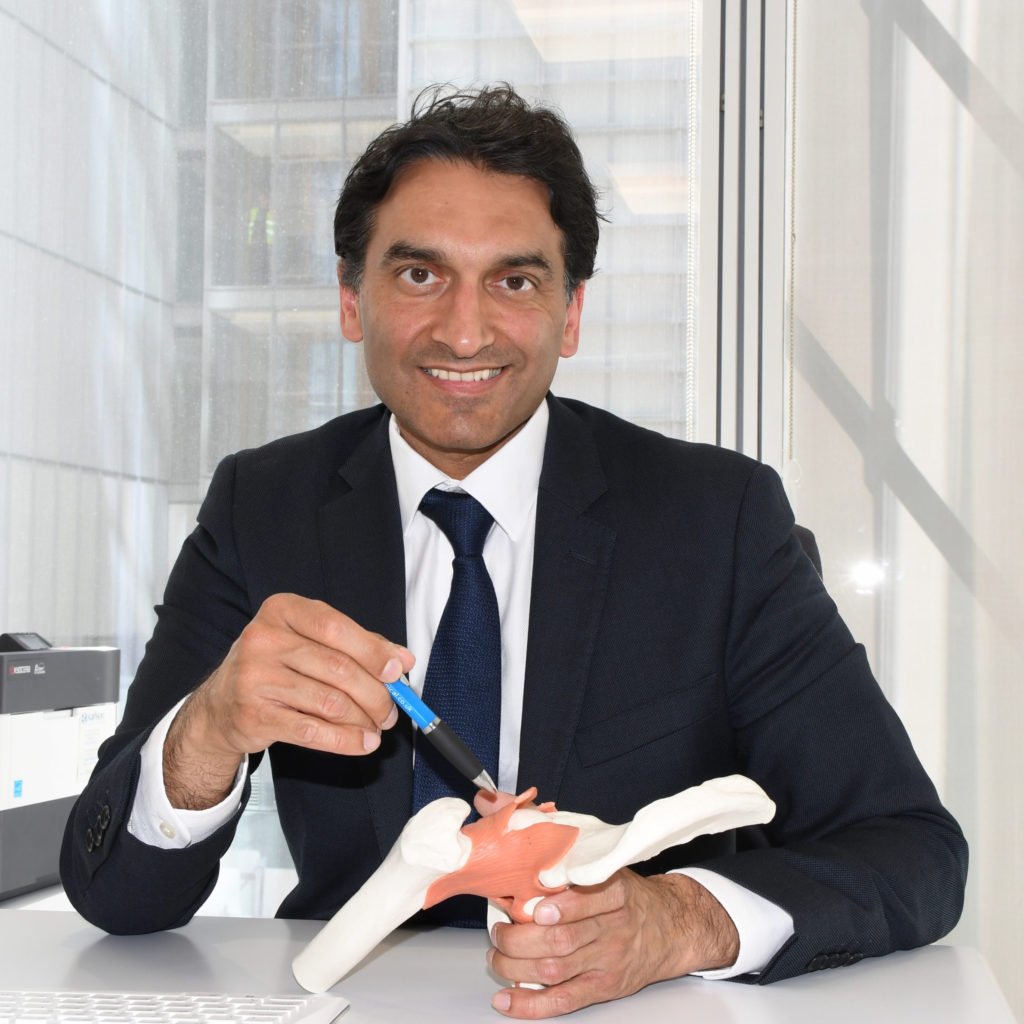
KNOW YOUR KNEE BLOG SERIES
What is the best way to treat a meniscal tear?
Orthopaedic Opinions Blog
By Mr Vipin Asopa, May 2023
There are a number of possible structures in the knee that can be injured, with a meniscal tear being one of these potential injuries. The menisci are best described as crescent-shaped rings located in the knee joint, triangular in cross-section and made up of collagen. It is believed that they have a shock absorbing function within the knee.
A torn meniscus may be caused from sudden pivoting or stops and turns, kneeling, squatting, lifting something heavy or even walking. In the last “Know your Knee” blog post which you can find here, my guest blogger discussed the causes and possible symptoms of a meniscal tear. I thought I would write a follow up to her blog post by discussing the best ways to treat a meniscal tear.
Deciding the best treatment plan for a meniscal tear depends on several factors, including the severity of the injury and the patient’s overall health. Determining whether surgery or non-operative treatment options are best can be difficult (as reported by this research article: https://pubmed.ncbi.nlm.nih.gov/35122496/). In general, the options for treating a meniscal tear include:
- Conservative treatment: This approach is usually recommended for minor meniscal tears, which can heal on their own over time. Rest, ice, compression, and elevation (RICE) can help reduce swelling and pain. Physical therapy can also be helpful to improve knee function and reduce pain.
- Medication: Nonsteroidal anti-inflammatory drugs (NSAIDs) can help reduce pain and inflammation associated with meniscal tears.
- Knee braces: A knee brace can help stabilise the knee joint and reduce pain.
- Injections: In some cases, a corticosteroid injection can be used to reduce inflammation and pain in the knee joint.
- Surgery: Surgery may be recommended for larger or more complex meniscal tears. The type of surgery will depend on the location and severity of the tear. In some cases, the torn portion of the meniscus can be repaired or removed through arthroscopic surgery. A meniscal tear (for example, a bucket-handle type) may be co-existing with an anterior cruciate ligament tear. In this instance, the best outcome is likely to be seen from having surgery to reconstruct the anterior cruciate ligament and treat the meniscal tear (reference: https://pubmed.ncbi.nlm.nih.gov/36730692/). You can find out more about meniscal surgery here.
It’s important to consult with a healthcare professional to determine the best treatment approach for your specific case. They can assess the severity of your injury and recommend the most appropriate treatment option for you.

Mr Vipin Asopa, PhD, FRCS (Tr & Orth), MBChB, BSc (hons)
Specialist Consultant Hip and Knee Surgeon in London, with a particular focus on hip pain, knee pain and sports injuries.
Mr Asopa performs numerous surgical procedures including hip and knee joint replacements, arthroscopy, ACL surgery, as well as treating arthritis, ligament injuries, trochanteric pain and more.
To book an appointment with Mr Asopa:
Call: +44 (0) 794 319 1592 | Email: admin@ortho-surgery.uk